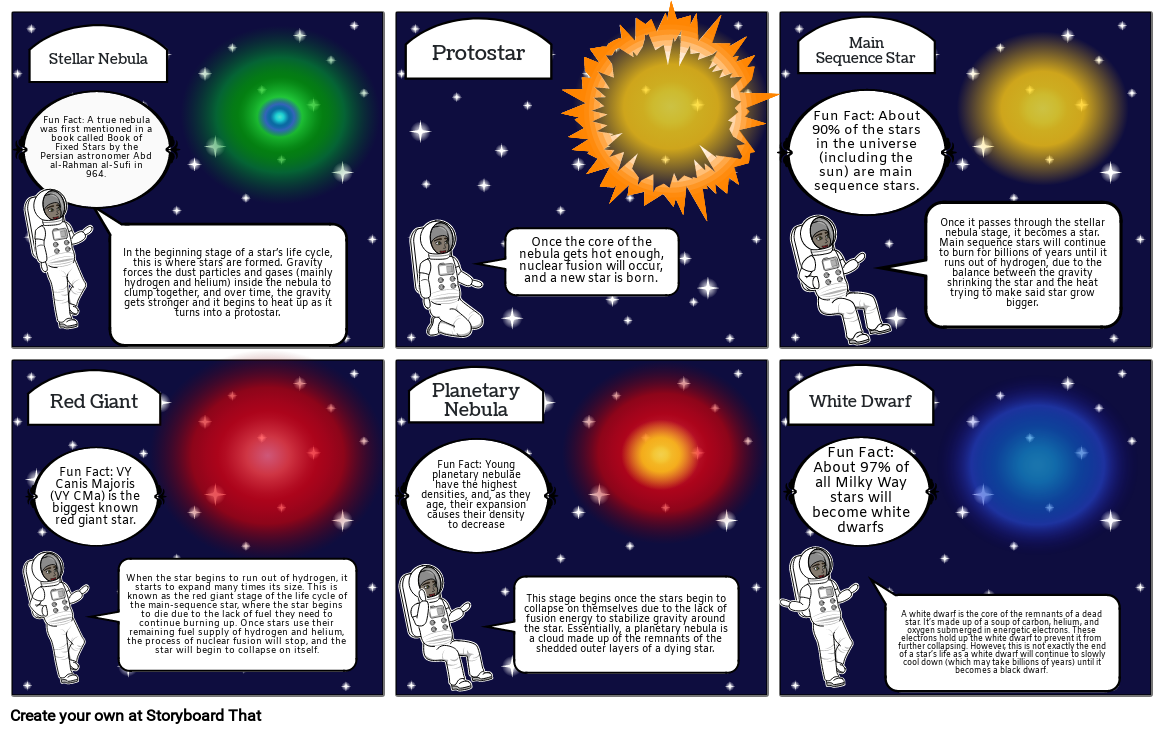hydrogen and helium burning

Storyboard Text
- Fun Fact: A true nebula was first mentioned in a book called Book of Fixed Stars by the Persian astronomer Abd al-Rahman al-Sufi in 964.
- Stellar Nebula
- In the beginning stage of a star’s life cycle, this is where stars are formed. Gravity forces the dust particles and gases (mainly hydrogen and helium) inside the nebula to clump together, and over time, the gravity gets stronger and it begins to heat up as it turns into a protostar.
- Protostar
- Once the core of the nebula gets hot enough, nuclear fusion will occur, and a new star is born.
- Fun Fact: About 90% of the stars in the universe (including the sun) are main sequence stars.
- Main Sequence Star
- Once it passes through the stellar nebula stage, it becomes a star. Main sequence stars will continue to burn for billions of years until it runs out of hydrogen, due to the balance between the gravity shrinking the star and the heat trying to make said star grow bigger.
- Fun Fact: VY Canis Majoris (VY CMa) is the biggest known red giant star.
- Red Giant
- When the star begins to run out of hydrogen, it starts to expand many times its size. This is known as the red giant stage of the life cycle of the main-sequence star, where the star begins to die due to the lack of fuel they need to continue burning up. Once stars use their remaining fuel supply of hydrogen and helium, the process of nuclear fusion will stop, and the star will begin to collapse on itself.
- Fun Fact: Young planetary nebulae have the highest densities, and, as they age, their expansion causes their density to decrease
- Planetary Nebula
- This stage begins once the stars begin to collapse on themselves due to the lack of fusion energy to stabilize gravity around the star. Essentially, a planetary nebula is a cloud made up of the remnants of the shedded outer layers of a dying star.
- Fun Fact: About 97% of all Milky Way stars will become white dwarfs
- White Dwarf
- A white dwarf is the core of the remnants of a dead star. It’s made up of a soup of carbon, helium, and oxygen submerged in energetic electrons. These electrons hold up the white dwarf to prevent it from further collapsing. However, this is not exactly the end of a star’s life as a white dwarf will continue to slowly cool down (which may take billions of years) until it becomes a black dwarf.
Over 30 Million Storyboards Created
No Downloads, No Credit Card, and No Login Needed to Try!
